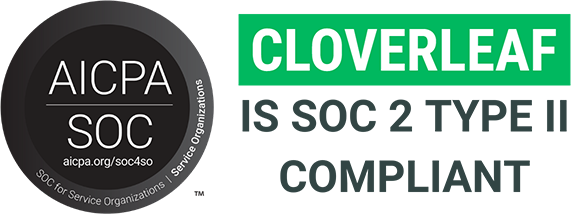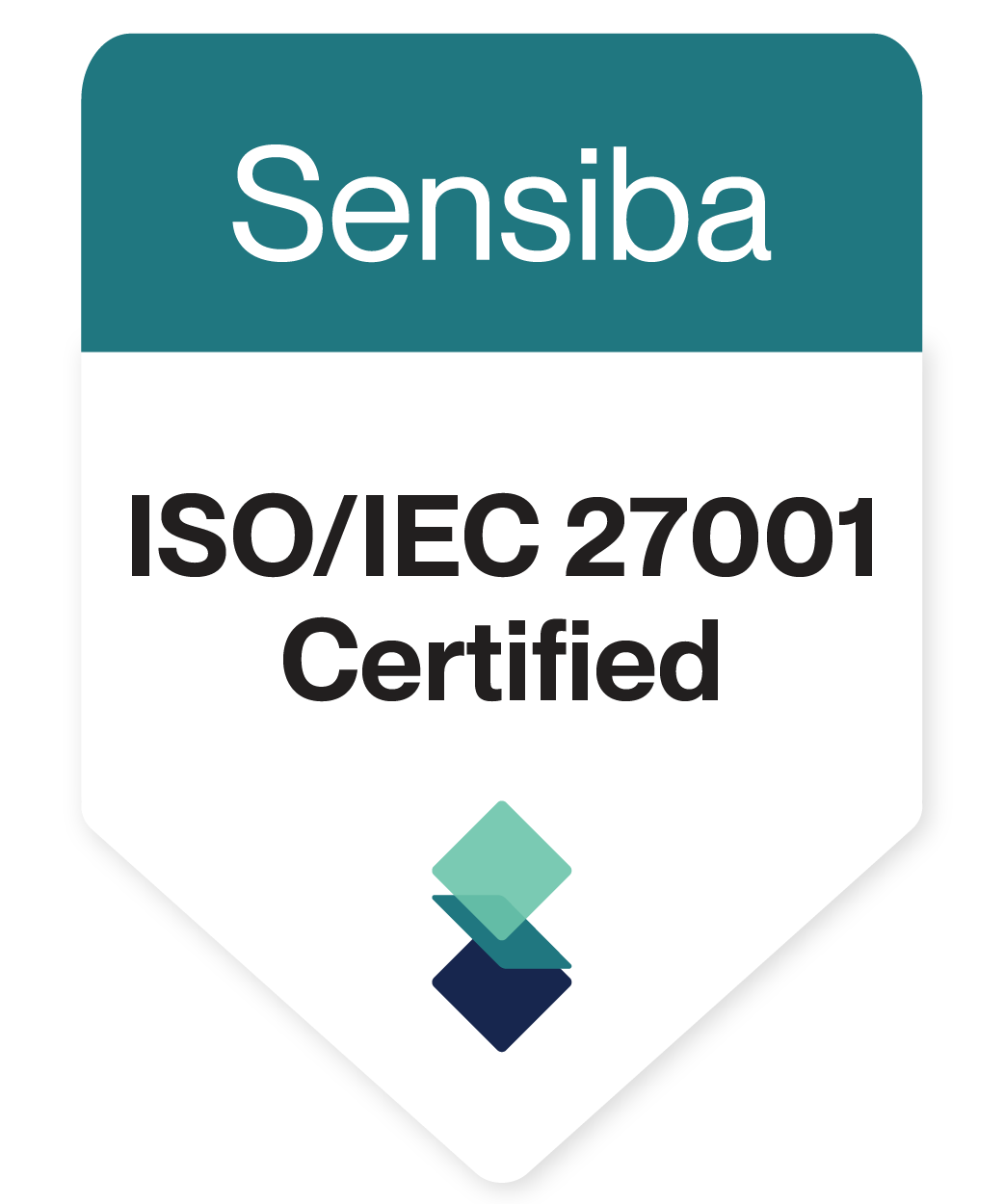Talent Development Leaders play an essential role in helping their team develop soft skills (human skills) by sharing time-testing learning and concepts. This information provides foundational knowledge and skills that are essential for employee growth. However, one of the ongoing challenges in learning and development is ensuring that the valuable insights gained from these sessions are retained and effectively applied in everyday work.
We have access to more information than ever before, yet the changing nature of work, pressing problems to solve, and focus on productivity can quickly outpace the ability to retain new learning. Even before these more modern challenges made it harder to focus and acquire knowledge, there were models about learning that showed a typical erosion of knowledge days after learning. The human mind can only process a limited amount of information, most of which never makes it to long-term memory.

Does Learning and Development Need To Adapt?
Learning methods provide so much valuable information, but how do you make it stick? Training often involves ongoing sessions, but what about when these are not available or happening? Learners may forget or struggle to apply.
This was famously measured and proven by one of the most influential early experiments in psychology. Between 1880 and 1885, Hermann Ebbinghaus studied how much information can be retained after specific intervals of time. He found that within 20 minutes of studying new information, 40% is already forgotten, rising to nearly 70% by the end of that first day (Murre & Dros, 2015). This study has since been replicated numerous times, all with similar results, and that is after studying information with intentional attempts to remember it.
The approach to development is ripe for change so that it can align with how our brains process and retain information.
Enter the concept of micro-nudges, an approach to learning and development that seamlessly integrates into the daily workflow of employees. Micro-nudges are brief, focused prompts that facilitate continuous learning and improvement without the cognitive overload associated with traditional methods.
Nudges can leverage contextual, situational prompts to encourage behaviors and actions that align with organizational goals and individual development paths. Providing small, digestible pieces of information right when they are most relevant enables a more natural and effective understanding and application of new knowledge.
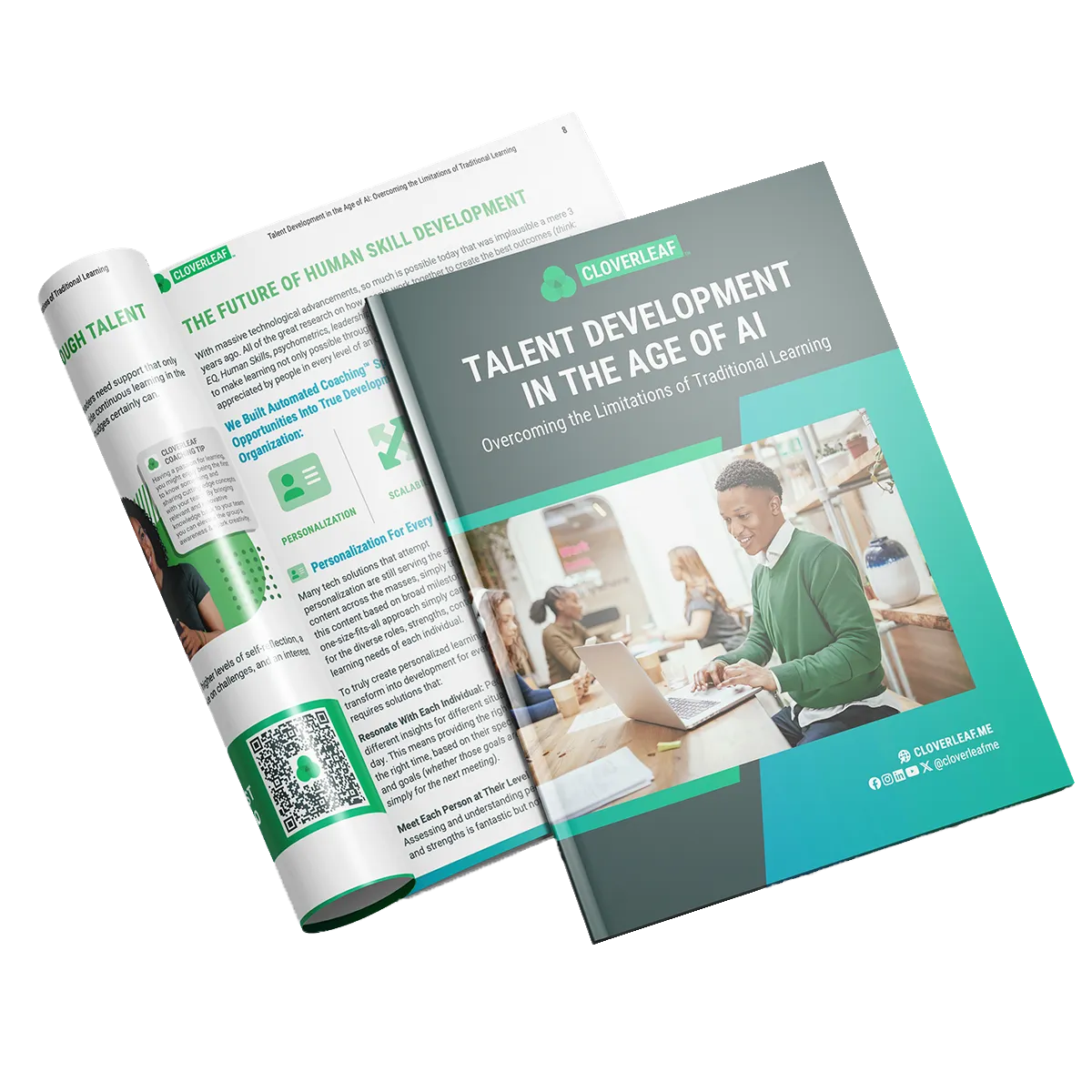
HUMAN SKILL PROGRAMS ARE HITTING LIMITATIONS...
- Close the widening gap between learning and on-the-job application
- Overcome the tension of pausing productivity for development opportunities
- Integrate learning so it is actually in the flow of work
- The evolution of human skill development
- What Automated Coaching™ is and how it works.
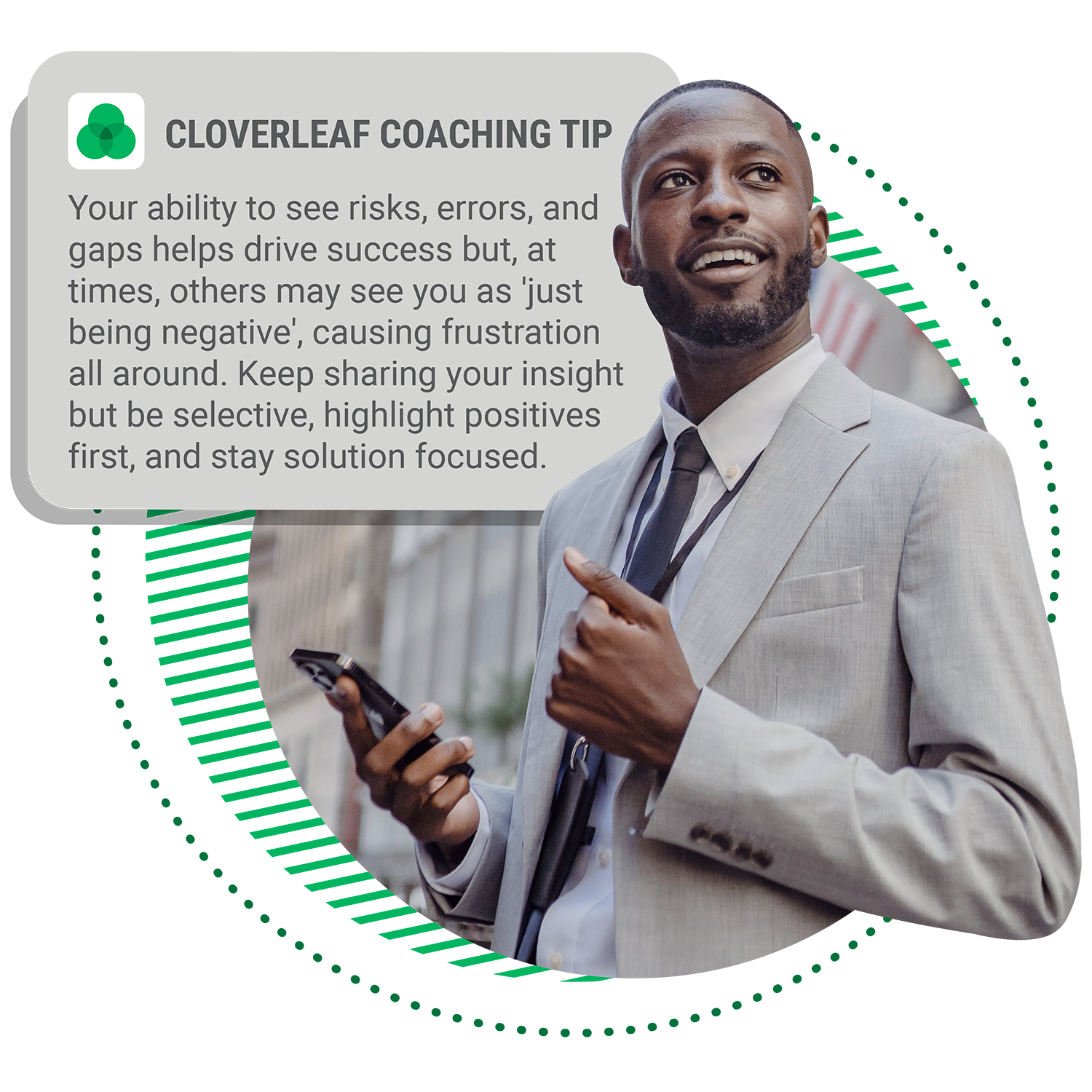
Why Are Micro Nudges More Effective For Employees?
Micro-nudges represent a tailored solution to the challenges traditionally associated with learning and development, particularly the problems of information overload and rapid forgetfulness post-training. By addressing these issues head-on, micro-nudges enhance the learning experience, making it more effective and impactful.
Consider what it’s like to use some of the most popular strengths and behavioral assessments such as Myers-Briggs®, DISC, CliftonStrengths®, or Enneagram. Most assessment results are delivered as an overwhelming, one-time data dump in the form of a 30-page PDF report.
Most people will say they gleaned a key epiphany about themselves but can’t remember their result type. One epiphany is helpful, but 99% of the value is lost.
This happens so often that the trade has a nickname for this problem—the backseat effect—whereby detailed assessment reports are never fully internalized and tossed into the backseat of one’s car. Not because the reports aren’t thoughtfully constructed or lack insight but because they are simply too much information to handle at once.
A better approach entails using automated micro-nudges, where actionable insights are delivered in small doses over a long period of time. For example, Automated Coaching™ uses this approach by delivering assessment-derived recommendations via organizational communication channels (e.g., email, Slack, Teams) on how employees should approach their tasks or interactions with teammates.
Nudges can transform hard-to-retain information into an integrated learning process that aligns with the principles of how people best learn and adapt.
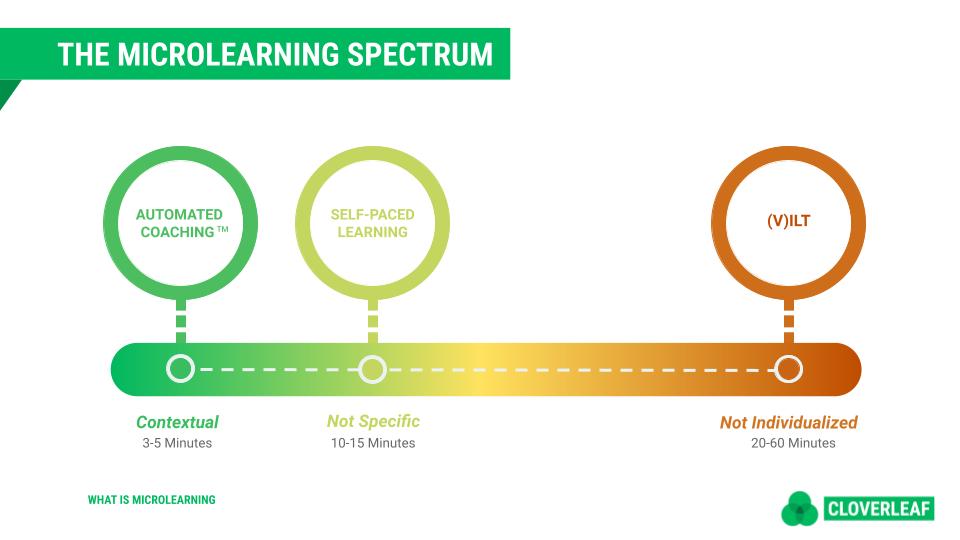
Are Nudges The Solution To The Challenges Of Human Skill Development?
1. Soft Skill Development Is A Dynamic Process
There is an assumption that soft skill development is sequential and upward, whereby individuals start at a lower level of competency and progress towards a pinnacle destination. While this scaffolding approach works for technical skills, it breaks down for soft skills.
The process of soft skill development is fluid—you start in situ, with varying levels of competence across an ever-evolving list of knowledge, skills, and abilities that matter in some contexts but not others (Day & Dragoni, 2015). Therefore, when it comes to developing human skills, it must move from a static experience to a dynamic experience.
Nudges provide timely, situational guidance that allows individuals to apply and refine these skills in real-time, adapting to the evolving demands of different workplace scenarios.
2. Soft Skill Development Must Be Highly Personalized
Organizations typically approach soft skill initiatives as if everyone is similar with respect to their psychographics (e.g., traits, strengths, cognitive abilities, worldviews, etc.) and their interest in development in general (e.g., motivation to learn, leader identity, self-efficacy). While designing for the mean is efficient, it’s not effective. The goal, instead, should be to assume variability across individuals (Rose et al., 2013) and, in turn, move from overgeneralized insights to personalized insights.
For example, Automated Coaching counters this problem by offering personalized insights tailored to the unique psychographics of each individual, such as their traits, strengths, and cognitive abilities. By integrating data-driven insights into personalized nudges, learners receive specific, relevant guidance that respects their individual differences and developmental needs.
3. Soft Skill Development Must Be Actionable
Soft skill development typically happens as a one-time initiative (e.g., workshop, training, coaching session, etc.) where participants are inundated with recommendations. This approach is misaligned with information processing theory, which suggests that human beings can only process and retain a limited amount of information in one setting (Atkinson & Shiffrin, 1968).
Nudges address this challenge by breaking down information into smaller, manageable insights delivered at the point of need. To fully optimize developmental resources (e.g., time, money, energy) necessitates an approach that moves from being overwhelming to one that is digestible and actionable.
Nudges Can Make Human Skill Development A Light Lift For Leaders
In total, the problem is that soft skill development is currently a static, overgeneralized, and overwhelming experience but should instead be a dynamic, personalized, and actionable experience.
Micro-nudges are promising given that research suggests that learning and behavior regulation are optimized when the experience is customized to individuals’ characteristics and needs, situationally adaptive, integrated within one’s flow of work, and available on demand (Maity, 2019). Human beings can’t accommodate these features at scale, but technology-derived micro-nudges certainly can (Kurzweil, 1990).
Those in charge of assessments need to be realistic. People can’t internalize information like super-computers. The goal should be to deliver digestible nuggets of information at the right time and in the right place. Addressing individuals’ specific needs and contexts, micro-nudges help transform the approach to soft skill development from a burdensome task into a series of manageable, impactful interactions that promote sustainable growth and meaningful engagement in the workplace.
Proven Behavior Change Through Coaching Nudges
One of the most compelling validations for the use of micro-nudges in talent development comes from recent research findings associated with Automated Coaching™. Studies have shown that micro-nudges significantly boost self-reflection, enhance the desire for self-knowledge, and improve the capability to handle complex challenges.
Impact on Self-Reflection and Self-Knowledge: Micro-nudges are specifically designed to prompt individuals to think critically about their immediate actions and how these align with their longer-term goals and professional growth. This continual engagement not only reinforces learning but also fosters a deeper understanding of one’s strengths and areas for improvement.
Enhancing Capability to Handle Challenges: By providing real-time, contextual feedback, micro-nudges empower employees to apply soft skills in various situations, from resolving conflicts to collaborating effectively with diverse teams.
Contextualized Nudges Make Scaling Human Skills A Real Possibility
One of the most significant advantages of micro-nudges is their ability to provide real-time, contextualized feedback. This type of feedback is crucial because it ties directly into the immediate tasks or challenges employees face. By integrating learning directly into the flow of work, micro-nudges ensure that training is not only more relevant but also immediately applicable.
Moreover, micro-nudges allow for a dynamic learning experience that evolves with the needs of the employee. Automated Coaching is designed to deliver information in a way that the human brain best processes and retains data: little by little and just at the right time.
The effectiveness of micro-nudges is also evident in their capacity to encourage behaviors and actions that align with organizational goals and individual development paths. By providing small, digestible pieces of information at critical moments, micro-nudges enable a more natural and effective understanding and application of knowledge, which is vital for personal growth and organizational success.
The role of Learning and Development (L&D) is undergoing a significant transformation. No longer just a support function, L&D is becoming a critical strategic partner, essential for navigating the complexities of today’s workforce. During a recent webinar hosted by Cloverleaf, industry experts discussed these changes, addressing both the challenges and innovative solutions within modern L&D practices.
During the webinar, Stephanie Licata, Senior Learning Strategist at Cloverleaf, framed the discussion: “We’re really here to talk about how do we transform how L&D is perceived, how it’s leveraged, how we think about it, how stakeholders think about it, and how we can really help organizations leverage it as that competitive edge.”
This statement underscores the evolving perception of L&D from a cost center to a catalyst for organizational success. The discussion highlighted the critical nature of integrating L&D strategies seamlessly into business operations, emphasizing that effective L&D practices can significantly influence a company’s competitive position by enhancing workforce capabilities and fostering a culture of continuous improvement and innovation.
In this post, we explore key insights that are shifting the perception of L&D’s role and examine how to transform learning and development into a powerful lever for business growth and employee development.

L&D Can Be A Strategic Investment Not A Cost Center For Organizations
L&D is transitioning from its traditional training function to a strategic investment within organizations. L&D needs to be seen not just as a training ground but as a pivotal engine driving the business forward. This evolution reflects a broader recognition of L&D’s potential to not only improve individual performance but also to drive organizational growth and adaptability.
Another significant takeaway is the integration of L&D into the very fabric of company culture. By making learning a core aspect of organizational life, companies can unlock the full potential of their employees. This integration helps in cultivating a workforce that is continuously evolving, adaptable, and aligned with the company’s long-term strategic goals. When L&D is woven into daily operations, it becomes a natural part of progress.
Automated Coaching™ supports this perspective because it embeds learning into the very fabric of one’s work, ensuring that L&D initiatives are directly tied to achieving business goals.
You’ve probably built and bought tons of content, but translating it all to your team, particularly managers can be challenging. Automated Coaching™ provides real-time support: just start asking questions… ‘How do I resolve conflict with [name]?’ and receive instant, personalized advice to navigate challenging moments. Leaders need more effective ways to ensure that the valuable information shared during training sessions becomes applicable and available at the moment it is needed, specific to a team member’s context. Automated coaching does this.

HUMAN SKILL PROGRAMS ARE HITTING LIMITATIONS...
- Close the widening gap between learning and on-the-job application
- Overcome the tension of pausing productivity for development opportunities
- Integrate learning so it is actually in the flow of work
- The evolution of human skill development
- What Automated Coaching™ is and how it works.
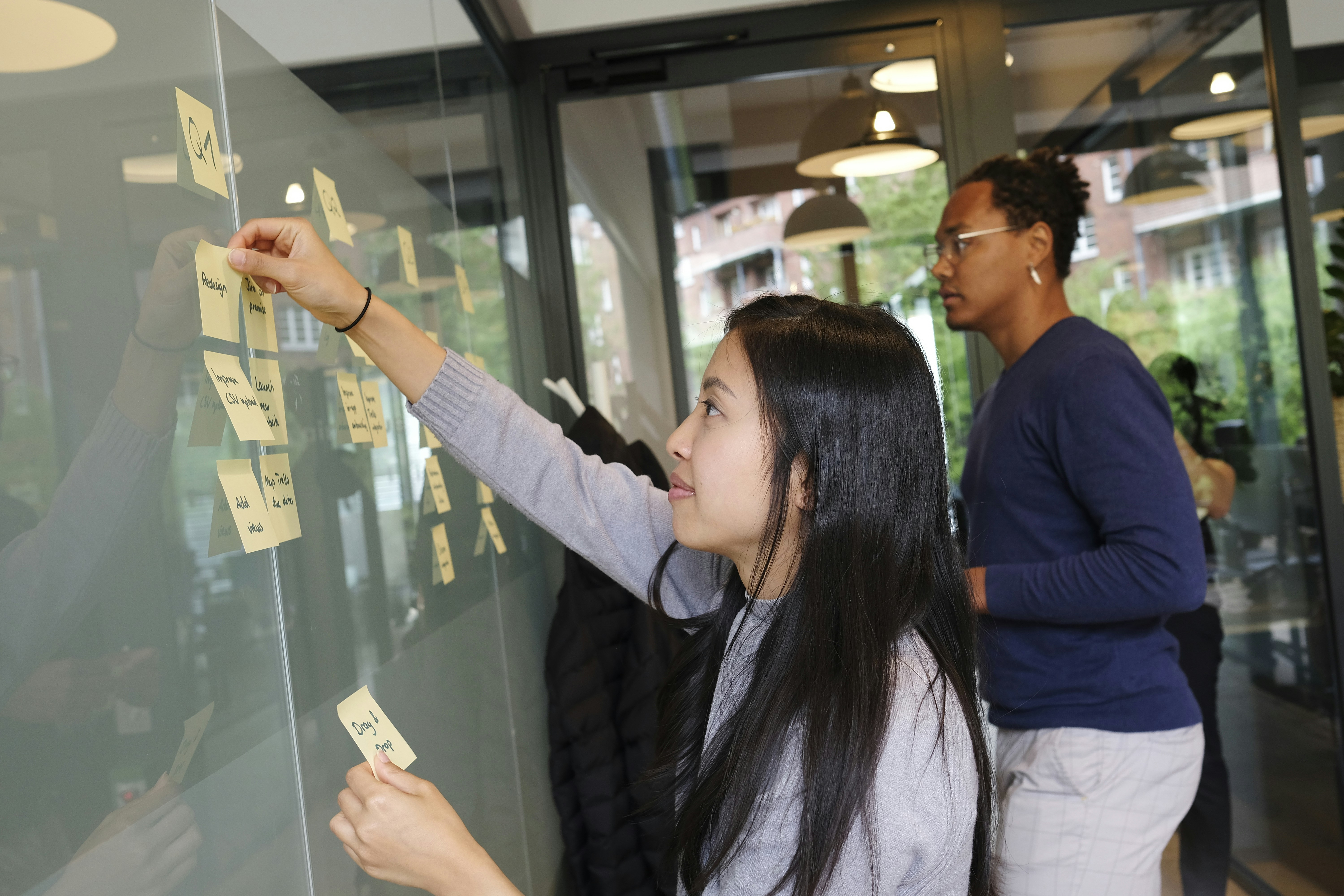
3 Significant Challenges in Traditional L&D Approaches
The traditional “one-size-fits-all” model of L&D often fails to address the diverse needs of each employee, leading to suboptimal outcomes and wasted resources. A lack of personalization and scalability in conventional learning programs can significantly hinder their effectiveness and impact. Current methods often fall short due to several inherent limitations:
1. Lack of Personalization Traditional training programs often employ one-size-fits-all approaches because development leaders simply cannot be everywhere at once or provide content that is unique for each person and specific to their context.
2. Limited Scalability As organizations grow and become more global, scaling L&D initiatives to meet diverse and evolving needs becomes increasingly challenging without the right technology and strategy in place. Not to mention, development becomes costly when you consider providing it beyond a small group of leaders.
3. Loss Of Relevancy If training is confined to specific times or opportunities it loses relevancy. Learning and development must be accessible so that it is not dependent upon schedules and can happen in the flow of work.
L&D must move beyond traditional training methods that always requires removing people and overloading them with content and instead look at ways to embed learning directly into the flow of work.
Cloverleaf’s Response to these L&D Challenges
Business leaders keep asking learning professionals the same questions over the years.
Are we getting good value from investment in training?
Which type of training is the most effective?
How can we improve current learning and development programs?
What additional learning support do our teams need?
To answer these recurring questions, leaders need data that reveals the tangible impact of your L&D initiatives to demonstrate how tailored learning strategies can deliver measurable improvements in employee performance, organizational efficiency, and ROI.
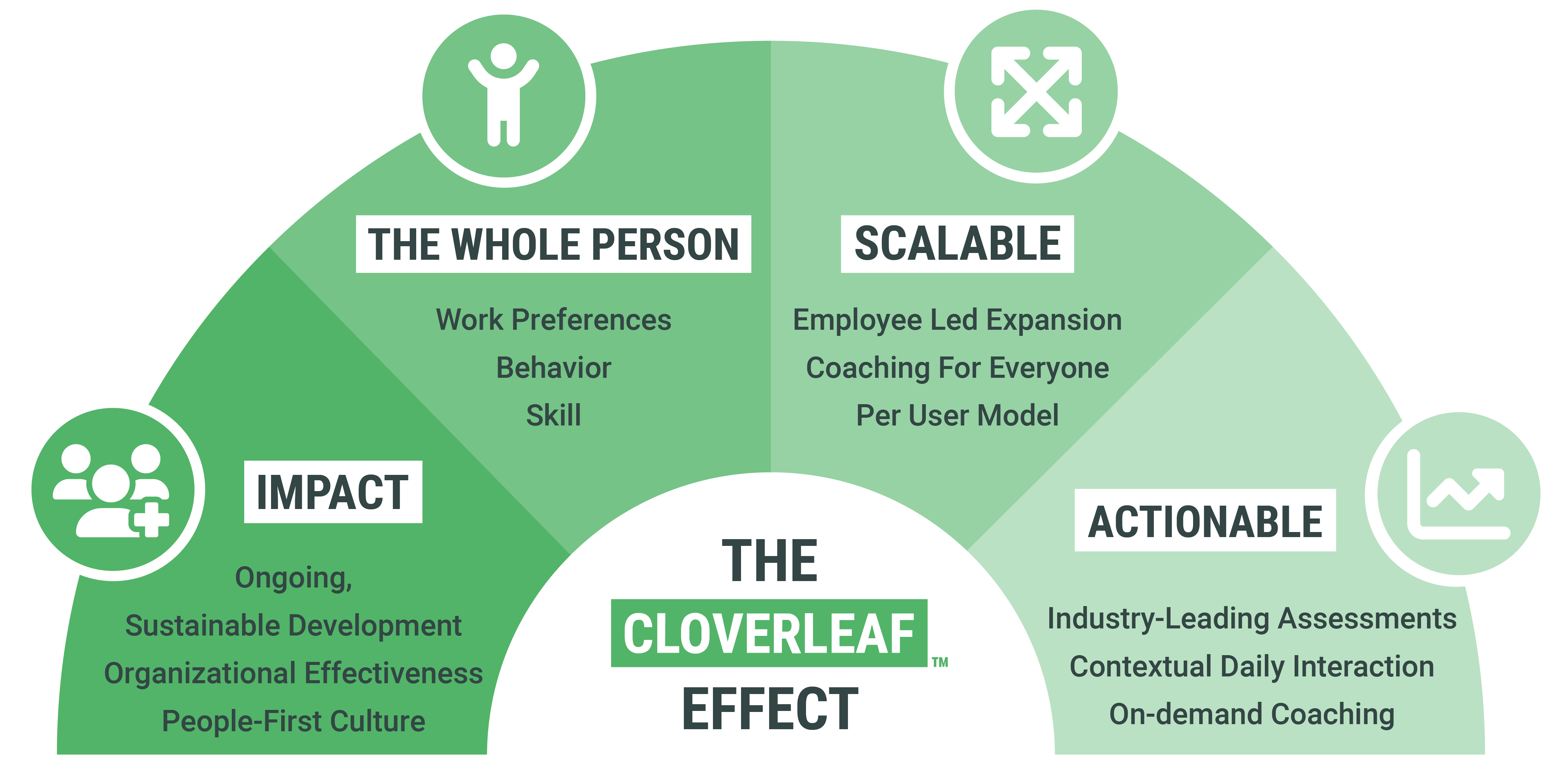
Contextual Microlearning
Cloverleaf challenges the traditional “one-size-fits-all” approach by focusing on personalized microlearning that is available and according to what an individual needs. Integrating learning into daily workflows helps ensure that it’s not only relevant but also perfectly timed to meet immediate business challenges. This means every learning instance is directly beneficial.
Automated Coaching Scales
Automated Coaching technology transforms coaching into a resource accessible for all employees, not just executives. It democratizes the learning process, making it possible to extend personalized coaching across entire organizations, regardless of geographical and functional barriers.
Continuous Learning Embedded in the Flow of Work
Embedding learning directly into the workflow, ensures that it becomes a seamless aspect of one’s daily activities. Sporadic or even scheduled training sessions struggle to make learning actionable; Automated Coaching integrates learning with the work itself, making it continuous and immediate. Doing so significantly enhances the agility and responsiveness of our workforce.
Proof of Impact
Cloverleaf helps reinforce this approach by using data to measure the effectiveness of learning interventions. In addition to metrics like completion surveys, it’s about capturing data that truly matters to businesses, such as improvements in behavior and job performance that deliver tangible impact on business results.
Forward-thinking organizations need to create environments that embrace and unlock the potential of the whole employee. Doing so requires embedding L&D into the fabric of the culture, transforming learning from a peripheral activity into a core strategic asset. During the Cloverleaf webinar, insights were shared on how effectively this can be achieved.
Weaving L&D into Company Culture with Cloverleaf
Organizations must create environments that express the intention to embrace and unlock the potential of the whole employee. People are not their roles. People are not their titles. People are not their skills. People are not their assessment results. They are whole human beings.
This perspective underscores the need for a holistic approach to employee development, one that goes beyond traditional training and development methods. Kim Crean, a panelist during the webinar, emphasized the strategic role of L&D in shaping company culture:
The most effective strategy that I’ve had in any organization is challenging our leadership to consider L&D as their partner. So I consider it like a hub and spoke kind of situation. L&D being the hub and the spoke driving to all those various strategies, either business priorities or workforce transformation, Crean explained.
This approach is not only about including L&D in the strategic conversation but making it a central part of how the company operates day-to-day. Crean further elaborated on how this integration happens in practice:
Typically, what I’ve done in many organizations is a listening tour of what we currently have and if there is something that we can either repurpose or reuse. This is the time it’s going to take for us to make that happen. Then these are the steps and skills that we’re going to get out of it. So, really being able to have a full training needs analysis of what it is that we need so that we can be engaged with our senior leaders on why we are not just a cost center. We are not just here to support you, but really partner with you on what you need today, what you need for your future.
The strategic placement of L&D within company culture has transformative effects. By weaving learning directly into the operations, it ensures it’s not just an afterthought but a fundamental component of our strategy. This integration enables a culture where continuous improvement is the norm, not the exception. Crean’s insights highlight the importance of viewing L&D as an integral business partner, shaping a culture of continuous development and readiness for future challenges.
Maintaining Agility and Responsiveness with Learning Solutions
To stay agile and responsive when the market changes, when economic shifts and technology comes on and changes everything, L&D can be this seed that you plant while creating the right environment around it for it to sprout and flourish and produce fruit in time, another panelist, Sotus Pulimenos a Global Talent Best Practices Leader stated. The key is to have learning professionals in the right positions to proactively bridge gaps and be forward-thinking in their approach to workforce development.
It’s about embedding learning and development so deeply that it becomes a part of the regular business rhythm and not something that Talent Leaders scramble to update or adapt when external pressures demand it.
Unlike traditional L&D programs that pull employees out of their work environment, Cloverleaf ensures learning is part of the daily routine. This method eliminates the common disconnect between learning and application, making development ongoing and directly relevant to each individual’s tasks and challenges. Automated Coaching empowers employees to apply learning in real-time, so that learning has a direct impact on their current projects and challenges.
Empowering L&D to Drive Strategic Impact Today
Transforming Learning and Development from a peripheral support function to a central strategic asset requires a profound shift in how L&D is perceived and implemented within organizations. Progressive leaders recognize that L&D is a pivotal force in driving business growth because of its ability to strengthen employee competencies that actually impact organizational success.
Using data-driven learning through Automated Coaching ensures that L&D initiatives are both impactful and directly tied to the real-time business needs of people, helping keep the workforce agile and responsive to the dynamics in the workplace that accelerate or slow work.
By redefining the role of L&D and embedding it deeply within company culture, organizations can better prepare for the complexities of working together and draw out the full potential of their human resources.
Imagine a workplace where every conversation sparks innovation, where every team meeting leaves you feeling more energized than drained. It’s not just a daydream; it’s the potential reality of a team that understands the profound interplay of personality types and practices the art of conflict resolution. This isn’t about lofty ideals but a practical roadmap to transforming everyday interactions into building blocks for a thriving organizational culture.
In this post, Stephanie Licata and Peggy Murriner, experts in organizational behavior and personality analysis, detail the core of effective teamwork. Through their unique lens, they unravel the complexities of human dynamics in professional settings, offering insights that turn potential workplace conflicts into opportunities for unparalleled growth and collaboration.
Too often, organizations focus merely on the functional role and hope that good team performance somehow follows. This is why even the most expensive professional sports teams often fail to perform according to the individual talents of each player: There is no psychological synergy. A more effective approach (like the mission to Mars example) focuses as much on people’s personalities as on their skills,’ highlighting the critical need for considering personality dynamics within teams. – Harvard Business Review
Stephanie’s expertise in the subtleties of team dynamics converges with Peggy’s innovative approach to personality frameworks. Together, they present a fusion of ideas that will challenge your perceptions, equip you with practical strategies, and inspire a new way of thinking about team interactions.
Whether you’re leading a diverse team, striving to find your place in a complex work environment, or simply curious about the psychological underpinnings of workplace relationships, this conversation is for you.
So, let’s uncover the secrets to working together and excelling in a workplace where every personality type is a valuable piece of the puzzle that can contribute meaningfully to the team.

Decoding Workplace Personality Conflicts: Beyond the Surface Interactions
Team dynamics are often like an iceberg – what we see on the surface is just a fraction of the complex interplay beneath. Unearthing the subtle yet critical aspects of these dynamics is possible by understanding the nuanced differences between conflict perception and the realities of challenging, constructive dialogues in a team setting.
The Nature of Conflict in Teams:
- Perception vs. Reality of Conflict: Stephanie Licata sheds light on a common misconception: Sometimes we perceive that something is going to be a conflict but it’s really just a difficult conversation. It’s a challenging conversation, right? This distinction is crucial in team dynamics, as it differentiates between unproductive personal disputes and the constructive challenges essential for progress.
- Healthy Conflict as a Growth Catalyst: Peggy Murriner observes, The highest performing teams actually allow themselves to engage in healthy conflict. Task conflict, as opposed to personal conflict, can be a powerful tool for team innovation and problem-solving. Adopting this perspective emphasizes that conflict isn’t an obstacle but a driving force for creativity and improvement when managed correctly.
In understanding the nature of conflict within teams, it’s insightful to consider broader workplace trends. According to the Niagara Institute, the most common conflict management style is collaboration, used by 59.8% of professionals, followed by compromise at 24.4%. Interestingly, more confrontational styles like competing, avoiding, and accommodating are less frequently employed.
75% of employees believe their direct manager could handle workplace conflicts better. Moreover, 60% of HR professionals attribute workplace conflicts to poor management. On a positive note, 95% of those who receive conflict resolution training report an improved work environment, underscoring the value of such training.
Leaders and teammates must realize that personal experiences of conflict can heavily influence team dynamics. Understanding that these stories exist and everyone has a personal narrative can help people effectively navigate conflict with empathy.
The Role of Preparation and Individual Conflict Styles:
Being proactive and understanding the unique conflict styles of each person is vital. It’s about striking the right balance between engagement and resolution, ensuring all discussions, no matter how challenging, are geared towards the team’s collective goals.

HUMAN SKILL PROGRAMS ARE HITTING LIMITATIONS...
- Close the widening gap between learning and on-the-job application
- Overcome the tension of pausing productivity for development opportunities
- Integrate learning so it is actually in the flow of work
- The evolution of human skill development
- What Automated Coaching™ is and how it works.

The Role of Personality Types in Conflict Resolution
Have you ever wondered why some team disagreements fuel creativity while others end in stalemate?” This question lies at the heart of exploring how personality types shape conflict resolution within teams.
Understanding the intricate role of personality types in conflict is essential for fostering effective team dynamics. Each team member brings a unique approach to handling conflicts, shaped by their inherent personality traits and different perspectives.
Unpacking Personality Dynamics in Conflicts:
Healthy conflict, focused on tasks rather than personal differences, can be a catalyst for a team’s innovative solutions and problem-solving. Successfully managing conflict requires differentiating between personal animosities and constructive debate.
What we often anticipate as a looming conflict is frequently just a necessary, albeit challenging, conversation. – Stephanie Licata
Leaders who acknowledge this insight can better influence how their team approaches what initially appears as conflicts, transforming them into opportunities for open communication and growth.
Leveraging Personality Assessments:
Tools like the 16 Types, DISC, and Enneagram provide a framework for understanding teammates. These assets are not just about categorizing personalities but about gaining deeper insights into how different individuals approach conflict and collaboration. The insights from these tools can be transformative in crafting strategies that play to each team member’s strengths and preferences.
4 Strategies for Navigating Conflicts Between Different Personalities:
- Identify and Adapt to Individual Conflict Styles: Begin by assessing each team member’s preferred style of handling conflict (using tools like DISC or the Enneagram). Then, tailor your approach accordingly. For example, if an individual appreciates directness, address issues head-on with them. If another prefers to avoid conflict, find ways to engage them in dialogue, ensuring their perspective is heard without causing discomfort.
- Promote Constructive Conflict for Innovation: Create a team culture where task-related conflicts are not seen as hurdles but as opportunities for innovation. Celebrate when individuals voice differing opinions on tasks or projects and facilitate these discussions in a structured way.
- Practice Empathy: Develop empathy by seeking to understand each team member’s background and how it shapes their approach to conflict. Use regular one-on-one meetings to understand their perspectives and fears.
- Balance Dialogue and Team Goals: Ensure that all discussions, even when they diverge into conflict, are aligned with the team’s overarching goals. Set clear agendas for meetings where potential conflicts may arise and remind teammates of the common objectives. Facilitate discussions so that the viewpoint of conflicting parties is connected to how it helps or hinders the team’s progress toward these goals.
Managing conflict in the workplace involves a nuanced interplay between understanding and action. It’s about recognizing the fine line between disruptive conflict and healthy debate to harness the latter to nurture an environment where diverse opinions and styles coexist and work together to drive the team forward.

The Key to Effective Communication Among Diverse Personalities Within Teams
Within diverse teams, varied communication styles can often lead to misunderstandings or poor communication. However, by acknowledging and celebrating the diversity in how individuals communicate, teams can unlock more depth in their interactions to create more inclusive and effective teamwork.
Recognizing that there is a spectrum of communication styles and valuing each member’s unique approach can bring a new level of understanding and cohesion, turning potential discord into an opportunity for richer, more inclusive discussions.
In a team, every voice matters. Encouraging and valuing diverse perspectives enriches the conversation and leads to more innovative solutions. – Stephanie Licata.
When teammates truly understand and adapt to the various ways of communicating, what they see as simple conversations can evolve into powerful collaboration tools for untapped potential.
4 Ways To Experience Effective Communication Between Different Personalities
1. Cultivate a Culture of Active Listening: Fully engage with those speaking, try to understand their point of view, and respond thoughtfully. This practice helps ensure all ideas are considered and valued and minimizes miscommunication.
2. Empathy and Emotional Intelligence: Emotional intelligence is a cornerstone of effective team communication. Understanding and responding to the emotional context of communications can create more empathetic and effective exchanges.
3. Regular Feedback and Check-ins: Establish regular feedback and check-ins to maintain open lines of communication within the team. Regular team meetings and one-on-one sessions offer a platform to address concerns, share successes, and reinforce a culture of positive communication.
4. Utilize Communication Tools: Leveraging personality assessments is invaluable in understanding and enhancing team communication. Many tools offer profound insights into a person’s unique way of interacting, work styles, sharing ideas, and receiving feedback.
Dissolving Personality Clashes With Cloverleaf's Insightful Coaching
One of the most effective ways Cloverleaf aids teams is by using personality data from tools like the 16 Types, DISC, and Enneagram to provide Automated Coaching™. These layered insights allow teams to illuminate the diverse ways individuals may engage in different types of conflict and communication. Leveraging this understanding can transform personality issues into a foundation for stronger, more resilient team dynamics.
Given the statistics on conflict management styles and their impact on employees, Cloverleaf’s tools become even more essential. They offer innovative ways to understand and address these challenges, aligning with the preference for collaboration and reducing the negative impacts of conflict.
Embracing a Future of Teamwork Shaped By Self and Other Awareness
The key to unlocking a team’s full potential lies in embracing the diversity of personalities, understanding the true nature of conflict, and harnessing the power of empathetic communication. By adopting these insights, teams can transform challenges into opportunities for growth and innovation.
The future of teamwork is not just about individual competence but about creating psychological safety, where each member’s unique traits and perspectives are valued and integrated into a collective force. It’s about moving beyond the conventional and stepping into a world where every interaction is a chance to learn, grow, and excel together.
We hope you take these lessons to heart, apply them within your teams, and experience the transformation firsthand. If you haven’t already, explore Cloverleaf’s suite of tools to gain deeper insights into your team’s dynamics so every member can thrive.
Learning professionals have long used the term “soft skills,” but it’s time for a redefinition. Traditionally seen as secondary—invested only when budgets allow—soft skills are actually crucial for effective workplace functioning. These encompass a range of competencies like effective communication, conflict resolution, giving and receiving feedback, employee recognition, cross-functional management, time management, and adaptability to change.
In contrast to hard skills, which are the technical skills specific to an industry or role, soft skills are fundamental for holistic human interaction in the workplace. According to LinkedIn’s 2023 Workplace Learning Report, 89% of L&D professionals recognize the growing importance of soft skills in navigating the evolving future of work.

What Are Soft Skills?
Soft skills are the interpersonal attributes and personal traits that determine how individuals interact in social and professional settings. They are crucial for collaboration, leadership, and maintaining a positive work culture. Examples of soft skills in today’s workforce include:
1. Effective Communication: The ability to clearly convey ideas and actively listen.
2. Teamwork: Collaborating effectively with others to achieve common goals.
3. Emotional Intelligence: Understanding and managing one’s emotions and those of others.
4. Problem-Solving: Creatively addressing challenges and finding solutions.
5. Adaptability: Adjusting to new conditions and learning quickly.
The Importance of Soft Skills
Despite their significance, a common challenge is measuring the effectiveness of soft skills training. Unlike hard skills, which can be quantified, soft skills require qualitative assessment. Therefore, nuanced solutions include integrating feedback opportunities, performance metrics related to teamwork and communication, and observing changes in workplace dynamics.
A study by MIT Sloan revealed a striking 250% ROI from a 12-month soft skills training trial in five factories. This trial, focusing on crucial skills like problem-solving and decision-making, not only led to increased productivity and efficiency but also improved employee attendance.
3 Steps To Implement Soft Skills Training
1. Identify Skill Set Gaps: Conduct surveys or interviews to determine which soft skills need strengthening.
2. Choose Relevant Training Methods: Opt for interactive e-learning modules, workshops, mentoring sessions, or embed coaching into the daily workflow of your team members.
3. Measure and Adjust: Continuously gather feedback and adjust development programs accordingly.
This approach allows businesses to foster a more engaged, collaborative, and adaptable workforce, essential for navigating today’s fast-paced workplace.
The Rising Significance of Soft Essential Skills
‘Soft’ skills have evolved beyond their traditional perception, becoming crucial for organizational competitiveness, retaining talent, and fostering cultures of accountability and inclusivity.
Significant data support this evolution:
Korn Ferry’s Survey of 550 HR Thought Leaders identifies their top priorities, including developing strategies that align people with business objectives, enhancing employee experiences, empowering managers to motivate and retain talent, and creating more attractive employment propositions.
According to the Gallup 2023 State of the Global Workplace Report, 59% of employees are disengaged, prioritizing engagement and cultural alignment over salary and benefits. The report suggests that employees seek more recognition, approachable management, and learning opportunities.
Supporting this, a collaborative study by Boston College, Harvard University, and the University of Michigan demonstrated a 250% return on investment from soft skills training, showing its substantial impact on team performance. The training led to more effective collaboration among teams, ranging from sales to customer response departments, and contributed to better business outcomes.
These cases highlight how soft skills training can positively affect different teams within an organization. Enhancing management, communication, problem-solving skills, and managerial effectiveness allows companies to build compelling people strategies that engage and retain top talent while strengthening employer branding.
Now What?
Having established the critical role of soft skills in today’s workplace, the next step is understanding how to implement and measure soft skills training programs effectively.

HUMAN SKILL PROGRAMS ARE HITTING LIMITATIONS...
- Close the widening gap between learning and on-the-job application
- Overcome the tension of pausing productivity for development opportunities
- Integrate learning so it is actually in the flow of work
- The evolution of human skill development
- What Automated Coaching™ is and how it works.

4 Ways To Understand and Implement Effective Soft Skills Training
1. Identify and Address Learning Gaps
The first step in creating a culture of engagement with high morale and strong collaboration is to equip every employee with essential soft skills. However, identifying which soft skills need strengthening is a challenge. HR and learning leaders must engage in direct conversations with employees to pinpoint these learning gaps.
2. Engage and Retain Learners
To ensure development, it’s crucial to focus on the type of learning that resonates most with employees. Research has shown that applying skills immediately, rather than in prolonged training sessions, significantly increases employee retention. A micro-learning approach, which breaks down training into small, digestible segments, can be more effective and actionable. This method allows for immediate application of learned skills, fostering a more dynamic learning environment.
3. Move Beyond Traditional Training Methods
It’s important to recognize that training programs are not the only solution for increasing soft skills. Technology can play a pivotal role in making soft skills training for employees scalable across an organization.
At Cloverleaf, we help integrate automated coaching and development tools to help employees strengthen interpersonal skills and professional development. This approach enables continuous learning tailored to the unique needs of each team and individual.
Practical Implementation Steps
1. Conduct Skills Assessments: Use workplace assessments to identify specific areas of strengths and potential skills gaps within your workforce.
2. Implement Micro-Learning: Utilize short, accessible, in-the-moment training that employees can immediately apply in their day-to-day activities.
3. Foster a Feedback Culture: Encourage regular feedback, allowing employees to discuss their learning experiences and provide insights into the training process.
4. Leverage Technology: Utilize platforms like Cloverleaf for automated coaching and development, ensuring a consistent and personalized learning experience.
4. Measure Training Effectiveness
Measuring the effectiveness of soft skills training can be challenging due to its qualitative nature. However, practical methods like observing changes in workplace dynamics, using performance metrics related to communication and teamwork, and integrating feedback mechanisms can provide valuable insights into the impact of these training programs.
By adopting these approaches, organizations can develop a more engaged, skilled, and cohesive team that is well-equipped to meet the challenges of the modern work environment.

It All Starts at the Top: Leadership's Role in Soft Skills Development
Successfully implementing and integrating soft skills within an organization begins at the highest level. It’s a common misconception to view supervisors and managers solely as the root of challenges in people skills. In truth, the embodiment of these skills must start with senior leaders and be mirrored in the company’s core values and behaviors.
Senior leaders play a pivotal role in setting the standard for soft skills within an organization. They must advocate for these skills and demonstrate them in their daily interactions and decision-making processes. Learning and HR leaders are often tasked with creating systems to evaluate leadership effectiveness, particularly in how they exhibit and foster soft skills. This evaluation should include mechanisms for delivering specific and timely feedback, ensuring leaders can identify and address any gaps in their leadership skills.
The Impact of Leadership on Psychological Needs
Research underscores the importance of workplace recognition, psychological safety, and personal development. A study conducted by the Center for Creative Leadership (CCL) sheds light on the profound influence that leadership styles have on team dynamics, particularly in terms of engagement from the team.
It’s also worth noting that approximately 60% of employees experience declining engagement and productivity due to poor frontline leadership, affecting 25% of organizations financially.
Conversely, engaged leadership, characterized by managers who are connected, empathetic, and supportive of their teams, can significantly enhance employee trust, loyalty, and overall satisfaction. This is contrasted with more authoritative or distant leadership styles, which can lead to disengagement and decreased productivity.
3 Benefits Of Soft Skills Training
1. Psychological Safety Increases: Leaders who excel in soft skills such as emotional intelligence, active listening, and positive reinforcement are more likely to address the psychological needs of their employees effectively.
2. Teams Retain Top Talent: One of the study’s significant observations is the correlation between leadership style and employee turnover. Leaders who actively engage in understanding and meeting the psychological needs of their employees significantly reduce turnover rates.
3. Strengthens Belonging: The study underscores the necessity for leaders to create a supportive and inclusive work environment. Such an atmosphere encourages open dialogue, mutual respect, and a sense of belonging.
Soft Skills Are Necessary For A Culture of Psychological Safety
Emotional intelligence, interpersonal communication, and active listening are most important soft skills for building a culture of psychological safety. This environment allows teammates to feel valued, understood, and safe to express their ideas and concerns. By prioritizing soft skills at the leadership level, organizations can foster a workplace where psychological safety is ingrained in the team and organizational culture.

Soft Skills In Action: Real-World Impact
One of our Cloverleaf Partners exemplifies this approach, delivering leadership communication training to thousands across various industries. In the last three years, they have integrated regular use of Cloverleaf into their leadership training, focusing on equipping leaders with the essential communication skills necessary for fostering trust and enhancing team performance.
A striking example of the program’s effectiveness is seen in the training of over 250 leaders from a hospitality organization. The most significant outcome, as reported by participants, was an increase in team retention. This improvement was attributed to the leaders learning and applying one fundamental skill: listening. Leaders boosted trust and approachability by simply taking the time to listen to their teams. This program has impacted leaders at all levels, from the C-suite to first-time managers.
While it’s challenging to directly correlate the financial investment in essential skill training to monetary returns, the benefits are evident in business goals to improve employee experiences, leadership effectiveness, and internal and external relationships. Essential skills competencies elevate the quality of work and positively impact customer experiences.
Thus, the focus should not be on if but on how to invest in soft skill training. The action taken in this direction is crucial, and the results speak for themselves. Your employees, and by extension, your customers, will appreciate and benefit from this commitment to developing essential skills.
Explore how Cloverleaf can transform your team. Dive into our innovative approach to aligning talent management, leadership development, and employee experience with your core business objectives. Discover how we validate ROI and elevate team dynamics, enhancing overall performance. Start your journey to strategic success with Cloverleaf today.
Understanding the unique capabilities each employee brings to the table and the areas where they may require support is not just about filling gaps or enhancing performance. It’s about creating a dynamic and adaptable workforce that can meet the challenges of today’s fast-paced business environment.
When employees know their strengths, they can leverage them to contribute more effectively, increasing job satisfaction and productivity. Conversely, identifying and managing weaknesses can prevent potential pitfalls and enable a proactive approach to career development.
The essence of this article is to explore the nuanced art and science of discerning and developing diverse talents within a workforce. We will delve into strategies for identifying strengths at various stages of the employee lifecycle, the importance of addressing weaknesses constructively, and how to integrate this knowledge into robust development plans.

Evaluating Employee Performance: The Strengths vs. Weaknesses Debate
A pivotal question arises in talent management: Should leaders amplify employee strengths or dedicate efforts to remediate weaknesses? The debate is rich with varying perspectives, each backed by its own set of principles and outcomes.
The Reason For Developing Strengths
Advocates for a strengths-based approach, such as those posited by Gallup’s research, suggest that focusing on what team members naturally do best can lead to higher employee engagement, increased productivity, and greater profitability.
Dr. Donald O. Clifton’s work in positive psychology underpins this strategy, emphasizing that when individuals apply their core strengths, they are more likely to excel and remain motivated. For instance, a salesperson with a natural charisma may be encouraged to harness this trait to foster better client relationships, thus driving sales.
The Necessity Of Addressing Weaknesses
Conversely, proponents of developmental focus, drawing upon the work of renowned psychologist Carol Dweck, argue for the growth mindset’s potential to transform weaknesses into competence areas. The rationale is that neglecting weaknesses, especially those that hinder performance, can harm individual and team success. For example, a project manager struggling with time management could benefit from targeted skill development, as this weakness directly impacts their core responsibilities.
Applying A New Approach To Strengths And Weaknesses
The nuanced truth may lie in a blended approach that acknowledges the multifaceted nature of our development strategies. As Marcus Buckingham says, A strength is not what you are good at, and a weakness is not what you are bad at. A strength is an activity that strengthens you. It draws you in, makes time fly by while you’re doing it, and makes you feel strong.
Of course, we want people to leverage their strengths, but when developing their weaknesses or opportunities for growth would directly impact their role, performance, and career development, it only serves the individual, team, and organization to strengthen areas in need.
This perspective underscores the benefits and importance of aligning employee roles with their strengths while strategically developing weaknesses that limit their potential. It’s not about a binary choice between strengths or weaknesses but rather an awareness of both, ensuring that employees are positioned to excel while evolving in areas that contribute to their role’s demands and career trajectory.
Do we need to force a person to develop the ability to design great presentations when it’s not essential to their role or future within the company? Probably not. But it would serve them to improve their active listening, ability to give feedback or overall communication skills. Those interpersonal skills are role and function-agnostic.
The debate is not about choosing one approach; it’s more advantageous to foster a robust and adaptable workforce intentionally. Organizations can create a continuous growth and resilience culture by leveraging strengths and judiciously improving upon weaknesses when necessary.

Do You Want To Unleash The Strength's Of Your TEam?
- Make development available to each team member
- Personalize growth to individual strengths and needs
- Integrate learning so it is actually in the flow of work
- Scale human skills that accelerate teamwork
- Prove the ROI of your development programs

How To Identify Employee Strengths And Weaknesses
Understanding and leveraging employee strengths is a cornerstone of effective talent management. Strengths are more than tasks an employee excels at; they are activities that invigorate and inspire, leading to peak performance and job satisfaction.
4 Strategies for Uncovering Strengths:
1. Interview Process: Begin at the recruitment stage by asking candidates to articulate their strengths as they pertain to the role. Inquire how they’ve previously harnessed these strengths professionally, which can offer predictive insights into their future performance.
2. Onboarding Observations: The initial months of employment are telling. Observe which tasks new hires gravitate towards and excel in, and note any hesitancy or reluctance in other areas. This period is ideal for identifying natural aptitudes and potential areas for growth.
3. Ongoing Dialogue: Regular one-on-one meetings between managers and employees should be a platform for discussing strengths. Encourage employees to reflect on their successes and how they can apply their strengths to current and future projects.
4. Performance Reviews: Incorporate self-assessment in performance evaluations to prompt employees to consider their strengths critically. Goal setting should then align with these strengths, fostering a sense of achievement and progress.
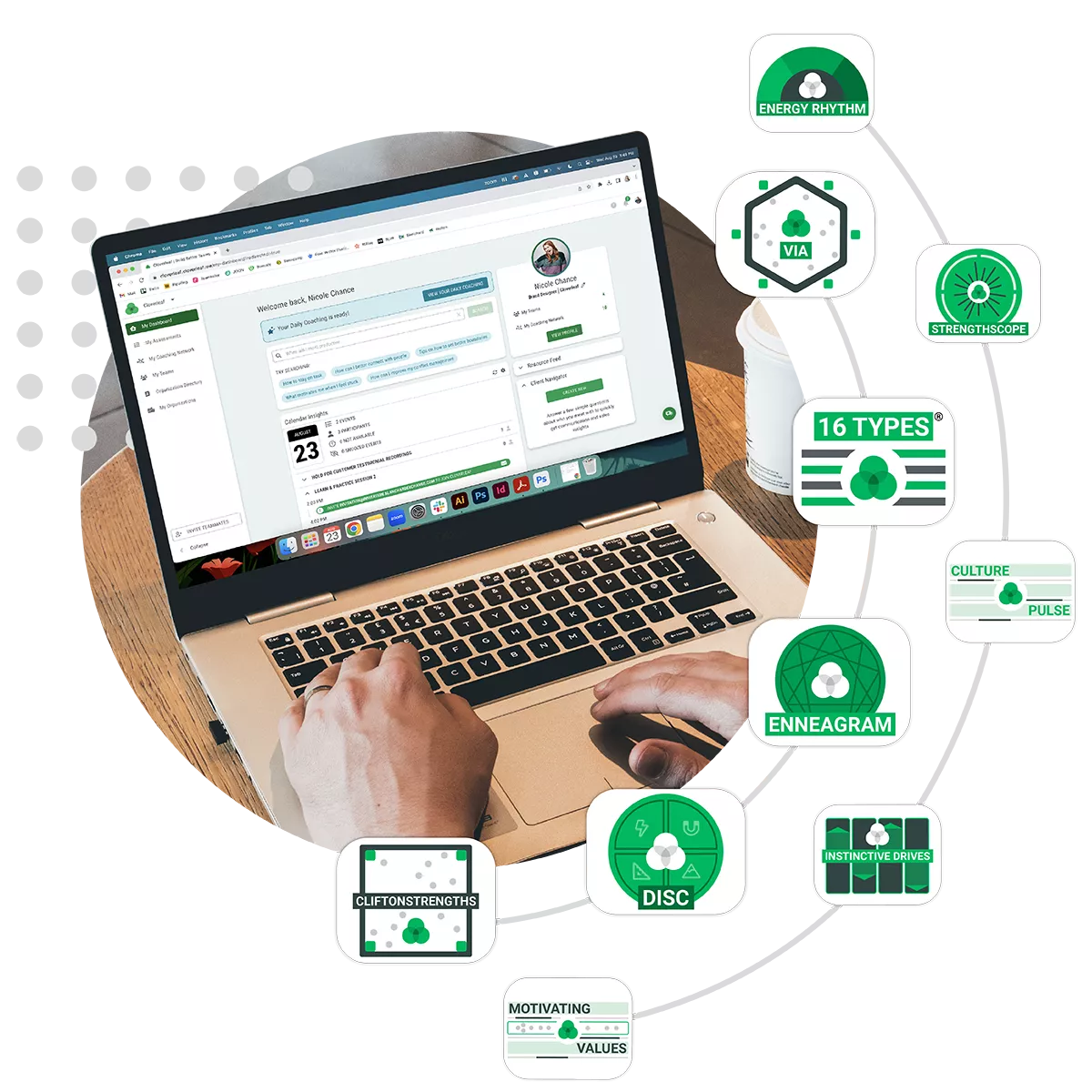
The Role of Psychometric Assessment Tools:
Psychometric tools such as the 16 Type Indicator (MBTI), DISC, and CliftonStrengths® offer valuable insights into an employee’s strengths. These assessments can help increase self-awareness and guide personal development, ensuring each member’s strengths are fully utilized.
Cloverleaf takes the insights from traditional assessments and transforms them into actionable coaching. By integrating Cloverleaf’s insights into daily workflows, managers and employees can have more strategic conversations about performance and development, leading to a more engaged and productive workforce.
Recognizing Employee Weaknesses
In a professional context, weakness is an area where an employee may lack proficiency, impacting their performance or growth potential. Identifying these areas is not about highlighting shortcomings but about fostering an environment of continuous improvement.
3 Methods for Uncovering Areas for Development:
1. Candid Feedback: Create a culture where feedback is seen as a tool for growth. Encourage managers to provide candid feedback to help employees understand their development areas while supporting them.
2. Self-Assessment: Empower employees to self-reflect on their performance and identify areas they wish to improve. This self-directed approach to professional development can lead to more meaningful and personalized growth paths.
3. Integrate Coaching: Foster a coaching culture where leaders facilitate employee development, empowering individuals to identify and develop their strengths and address growth areas in alignment with organizational objectives.
Addressing weaknesses should be a supportive process that aligns with the employee’s career aspirations and the organization’s goals. Employees can approach their weaknesses as opportunities for growth and learning by focusing on development rather than deficiencies.

Harnessing Strengths and Addressing Growth Opportunities in Employee Development Plans
With a clear understanding of personal strengths and areas for growth, the next step is to integrate this insight into a cohesive development strategy. Organizations thrive when they establish systematic processes that recognize and harness individual strengths and constructively address and support growth opportunities.
Incorporating this dual focus into performance evaluations and career pathing plans is crucial. Such an approach ensures that development is not a one-size-fits-all program but a tailored journey that aligns with each individual’s unique capabilities and aspirations.
4 Ways Employees Can Advocate For Their Strengths and Development
Proactive communication and feedback are vital for individuals to leverage strengths and identify growth opportunities. Here’s how to effectively engage in this process:
1. Practice Good Communication: Discuss your key strengths with your manager, ensuring they know where you excel and how to utilize them. This transparency can help prevent burnout and lead to more fulfilling and suitable projects.
2. Be Self-Motivated: Actively seek out and express interest in projects that align with your strengths. Request that your manager keeps you in mind for upcoming opportunities that match your skill set, allowing you to contribute effectively and grow within the organization.
3. Welcome Feedback for Growth: When challenges arise, approach your manager for constructive feedback. Collaboratively set realistic and measurable improvement goals in areas causing stress or difficulty. This approach not only aids in personal development but also demonstrates your commitment to professional growth.
4. Integrate Continuous Learning: Take ownership of your development by seeking resources such as articles, books, and training sessions to sharpen your existing strengths and help you develop new skills. Attend conferences and engage in experiences that broaden your perspective and enhance your competencies.
9 Key Practices for Managers to Optimize Team Strengths
For leaders, the art of nurturing employee growth is both a responsibility and a privilege. Here’s a roadmap to best practices in this endeavor:
1. Utilize Development Frameworks: Engage with established performance and career development frameworks already available.
2. Integrate Development into Dialogues: Ensure that discussions of strengths and growth areas are a staple of one-on-one meetings. This consistent focus helps to personalize development plans and reinforces the importance of continuous improvement.
3. Celebrate Successes: Regularly recognize and celebrate achievements in both individual and team settings. This can boost morale and reinforce the behaviors and strengths contributing to a thriving workplace culture.
4. Foster Peer Recognition: Encourage a culture of appreciation by starting team meetings with “shout outs,” where team members can celebrate each other’s strengths and contributions.
5. Host Strengths Roundtables: Organize sessions where teammates share their strengths and how they can use them to promote teamwork.
6. Provide Timely, Constructive Feedback: Address areas for development promptly and constructively. Timely feedback prevents minor issues from becoming more significant problems and guides employees toward quality work.
7. Distribute Learning Resources: Share and promote access to resources, training, and learning opportunities.
8. Adopt a Coaching Mindset: When discussing areas for development, take a coaching approach by asking insightful questions that prompt self-reflection, adaptability, and emotional intelligence, such as:
- “What patterns have you noticed in this area?”
- “In what ways do you feel you need support here?”
- “What does success look like for you in overcoming this challenge?”
- “What step could you take to enhance your abilities here?”
By implementing these practices, leaders can create an environment that recognizes and utilizes employee strengths and compassionately and effectively addresses areas for growth, fostering a development culture.

S.R. Residence Hotel Phetchabun: Harnessing Employee Strengths for Enhanced Service Quality
In the heart of Thailand’s Phetchabun province, S.R. Residence Hotel faced a common industry challenge: maintaining exceptional service quality in a demanding work environment. The hotel’s management recognized that the key to sustaining high standards lay in the well-being and satisfaction of their staff. They embarked on a study to explore the impact of work-life balance strategies on service quality, focusing on leveraging employee strengths.
S.R. Residence Hotel introduced a series of work-life balance initiatives tailored to the strengths and needs of its workforce. These included flexible scheduling to accommodate personal commitments and health and wellness programs to ensure employees felt valued and supported. The hotel aimed to create a more dynamic and responsive service environment by focusing on its staff’s strengths.
The results were telling. The hotel markedly improved across all five service quality dimensions: tangibles, reliability, responsiveness, assurance, and empathy. Customer satisfaction scores soared, and employee feedback reflected a newfound sense of engagement and morale. The study directly correlated the strength-based work-life balance strategies and the elevated service quality.
The case of S.R. Residence Hotel illustrates the profound impact of aligning employee development with individual strengths and life needs. It underscores the importance of a supportive management team and a company culture that values personal growth and work-life balance. For organizations looking to replicate this success, the case study offers a blueprint: invest in your employees’ strengths, support their well-being, and watch as they, in turn, elevate your business.
Final Thoughts:
The journey to harnessing employee strengths and addressing weaknesses is instrumental to a thriving workplace. Embracing both aspects with a balanced strategy can revolutionize a work environment, enhancing individual and collective performance.
Acknowledging strengths ignites engagement and drives motivation, while tackling weaknesses head-on is indispensable for a holistic approach to development. Leaders are crucial in championing this dual approach, creating a supportive atmosphere that encourages growth and recognizes value.
By integrating platforms such as behavioral and strength-based assessments like Cloverleaf, organizations can gain deeper insights into their workforce, enabling them to effectively align individual strengths with the company’s goals.
In essence, the interplay of strengths and weaknesses within development strategies is not just a managerial task—it’s a leadership skill for fostering a resilient and adaptive organizational culture.
Navigating the complexities of nurturing long-term, committed professional talent requires more than just a managerial title; it demands a leadership style that resonates with the evolving needs of today’s workforce. Managers and leaders are finding themselves at a crossroads where fostering responsibility, personal growth, and innovation is not just encouraged but expected.
The workplace is evolving, and with it, the workforce’s expectations. Today’s employees seek more than just a paycheck; they yearn for purpose, growth, and a sense of belonging.
Coaching leadership meets these needs head-on, offering a framework for managers to mentor rather than micromanage and inspire rather than impose. It’s a style that aligns with the human-centric focus of contemporary business ethos, where the growth of individuals is inextricably linked to the organization’s success.
The essence of a coaching leadership style lies in its capacity to cultivate a culture of collaboration and proactive engagement. While not every manager may naturally exhibit this approach, the good news is that it’s a skill that can be honed. This style of leadership is not about wielding authority but about empowering teams to discover their path to success.
In this post, you’ll explore the multifaceted nature of coaching leadership style, the application of emotional intelligence, and their transformative effects on leadership development and effectiveness. We’ll also examine how these strategies enhance individual skills and reinforce a team’s growth mindset.

What Is A Coaching Leadership Style?
The coaching leadership style is a relational and developmental approach, where the leader acts as a facilitator rather than a director, guiding individuals towards self-awareness and reaching their potential. It is characterized by a leader’s understanding and appreciation of each team member’s unique strengths and areas for growth.
This style is underpinned by the belief that every teammate has the potential to excel, and the leader’s role is to foster an environment that nurtures this potential into performance. Through personalized engagement, constructive feedback, and a commitment to the professional development of each individual, leaders who coach aim to unlock the latent talents within their teams, paving the way for collective success and individual fulfillment.
The origins of coaching leadership skills in the business sphere can be traced back to the late 20th century, with thought leaders like Sir John Whitmore pioneering the principles of performance coaching: Coaching is unlocking people’s potential to maximize their own performance. It is helping them to learn rather than teaching them. It’s a style that emphasizes developing people’s skills, creativity, and resourcefulness rather than simply directing and controlling.
The Shift from Traditional Leadership Styles to Coaching Leadership
The transition from traditional leadership methods to a coaching approach reflects a broader cultural shift in our understanding of work. Once the command-and-control model reigned supreme, predicated on strict oversight and rigid structures, the modern workplace calls for a more nuanced touch.
The essence of generative feedback and the avoidance of the ‘poop sandwich’ (criticism in between two positive comments) approach to criticism are emblematic of this shift. Leaders now recognize that the carrot-and-stick methods of the past are less effective with today’s workforce, which values autonomy, purpose, and self-expression.
A coaching style of leadership represents a move towards a more personalized, strengths-based approach, where the leader’s role is to help employees achieve their full potential by asking thought-provoking questions and facilitating problem-solving rather than providing all the answers.
The Role of Coaching Leadership in Today’s Business Environment
In today’s fast-paced, innovation-driven business environment, coaching is not just beneficial; it’s essential. The ability to provide feedback that is both candid and growth-minded is a hallmark of a leader who is a good coach. This style suits the contemporary work climate, where agility, continuous learning, and adaptability are critical.
Coaching akin to servant leadership helps create a culture where team members feel valued and understood, and their contributions are considered integral to the team’s success. They foster an environment where employees are encouraged to take ownership of their roles, set development goals, and pursue professional growth within the supportive framework of the team. In essence, coaching is about cultivating a company culture that is not only productive but also deeply human, resonating with the intrinsic motivations and aspirations of every person.

HUMAN SKILL PROGRAMS ARE HITTING LIMITATIONS...
- Close the widening gap between learning and on-the-job application
- Overcome the tension of pausing productivity for development opportunities
- Integrate learning so it is actually in the flow of work
- The evolution of human skill development
- What Automated Coaching™ is and how it works.
Adobe’s Performance Review Revolution:
Adobe Systems Incorporated made headlines when they replaced their annual performance reviews with a “Check-In” system, emphasizing ongoing feedback and expectations setting. Under the leadership of Donna Morris, the Executive Vice President of Customer and Employee Experience, Adobe has seen a 30% reduction in voluntary turnover. The Check-In system is a prime example of coaching leadership in action, focusing on real-time development opportunities and fostering open communication between managers and employees.
Google’s Project Oxygen:
Google’s internal study, Project Oxygen, sought to understand what makes a manager great at Google. The findings emphasized coaching as one of the top traits of their best managers. This led to the development of training programs focused on coaching skills for managers across the company. As a result, Google saw improvements in teamwork, employee satisfaction, and retention rates.
The Impact on Employee Satisfaction and Retention
A Gallup study revealed that managers who adopt a coaching style have teams with higher employee engagement and satisfaction levels. In an era where the cost of replacing an employee can be substantial, retaining talent through effective leadership benefits team morale and the company’s bottom line.
The benefits of coaching are multi-faceted, affecting not just the performance metrics but also the human elements of business. By investing in a coaching leadership style, organizations can create a sustainable environment that nurtures talent, drives performance, and maintains a competitive edge in the ever-evolving business landscape.
Not to mention, the influence of coaching extends beyond immediate team performance, deeply affecting employee satisfaction and retention. A coaching leader’s commitment to personal development can significantly enhance an employee’s connection to their workplace.
At PepsiCo, former CEO Indra Nooyi’s practice of writing personal letters to the parents of her executive team members to share their impact exemplifies how to be an impactful leader. This personal touch contributed to a culture where employees felt genuinely appreciated, leading to increased loyalty and decreased turnover intentions.
Similarly, Best Buy’s resurgence under CEO Hubert Joly was fueled by a leadership style prioritizing human connections and individual growth. By transforming managers into coaches, Best Buy not only improved customer service but also saw a rise in employee morale and a drop in turnover, proving that when employees are coached to success, they are more likely to stay and contribute to the company’s success.

7 Key Skills of Effective Coaching Leaders
Emotional intelligence is the bedrock of impactful coaching, comprising several key traits that allow leaders to navigate the complexities of human interactions and foster a positive work culture. Let’s explore these traits through the lens of experts in each field:
1. Self-awareness: Brené Brown exemplifies self-awareness through her introspective research on vulnerability and courage. She teaches leaders to embrace their strengths and vulnerabilities, understanding that this self-knowledge is crucial for authentic leadership that resonates with others.
2. Self-regulation: Marc Brackett’s work on emotional regulation gives leaders the tools to effectively manage their impulses and moods. His emphasis on pausing to think before reacting helps leaders maintain a calm and productive work environment.
3. Social awareness: Simon Sinek’s insights into what motivates people reflect a deep understanding of social awareness. He guides leaders in recognizing and responding to the emotional needs of their teams, which is essential for building trust and fostering collaboration.
4. Relationship management: Liz Wiseman’s concept of “Multipliers” is a testament to her expertise in relationship management. She demonstrates how leaders can amplify the capabilities of their direct reports through clear communication, inspiration, and effective conflict resolution.
5. Motivation: A coaching leader’s approach to motivation is characterized by an understanding of what drives their team members. This understanding fosters a workplace where intrinsic motivation is nurtured, and individuals are encouraged to pursue their goals within the context of the team’s vision.
6. Empathy: Empathy goes beyond mere understanding to genuinely sharing in the feelings of others. It’s a trait that enables leaders to connect with their team members on a human level, ensuring that interactions are compassionate and supportive, and that the workplace is a place of equality and empowerment.
7. Social Skills: Effective coaching leaders leverage social skills to relate to and engage with teammates. They prioritize collective growth and guide rather than control, creating an environment where constructive feedback and action are encouraged.
By integrating these EI components into their leadership style, coaching leaders can cultivate a work environment that supports the growth of individuals and enhances the collective well-being and productivity of the team.
Why Coaching Leadership Outshines 5 Traditional Types Of Leadership Styles
Leadership is a multifaceted endeavor, with various styles offering different benefits and drawbacks. However, when compared to traditional leadership approaches, coaching leadership often stands out as a more adaptive and empowering method. Here’s why a coaching leadership style is generally more advantageous than each of the following common leadership styles:
Autocratic vs. Coaching: Autocratic leadership centralizes power and decision-making in the hands of the leader, often leading to quick decisions but at the cost of creativity and team morale. In contrast, coaching leadership encourages autonomy and personal growth, which can lead to more innovative solutions and a more engaged team. While autocratic leaders may bring short-term efficiency, coaching leadership builds a resilient and adaptable team for long-term success.
Democratic vs. Coaching: Democratic leadership values the input of team members, which aligns with the inclusive nature of coaching leadership. However, coaching leadership goes a step further by seeking input and actively developing team members’ skills to contribute more effectively. This approach ensures that team engagement translates into professional growth and higher performance rather than consensus.
Holistic vs. Coaching: Holistic leadership’s focus on the team’s well-being is commendable, but it can sometimes lack the drive for performance and individual accountability that coaching leadership provides. Coaching leaders balance empathy with a clear focus on results, ensuring that the team’s well-being translates into tangible outcomes and personal development.
Visionary vs. Coaching: Visionary leaders inspire and motivate with a compelling vision of the future, but they may not always provide the support needed for individuals to reach that future. Coaching leadership, by contrast, combines vision with hands-on development, ensuring that each employee has the skills and confidence to contribute to the collective goal.
Authoritarian vs. Coaching: Authoritarian leadership imposes strict rules and high expectations, which can lead to efficiency but also stress and high turnover. Coaching leadership, while demanding high standards, achieves them through support and development rather than fear and control.
Identifying the Right Approach:
While each traditional style has its place, coaching leadership is often the more balanced and desirable, especially in today’s business environment. It combines the best elements of other styles—such as the efficiency of autocratic leadership, the inclusivity of democratic leadership, the empathy of holistic leadership, the inspiration of visionary leadership, and the high standards of authoritarian leadership—into a flexible, growth-oriented approach.
Influential leaders foster environments where team members are not just executing tasks but actively developing their capabilities. It’s a style that not only meets the organization’s immediate needs but also prepares the team for future challenges, making it a superior choice for leaders who want to build a robust, forward-thinking, and high-performing team.

6 Trends Shaping The Future Of Coaching Leadership
The trajectory of coaching leadership is increasingly intertwined with technological innovation and a culture of collaborative feedback. These emerging trends reshape how leaders engage with their teams and how organizations foster growth and learning.
1. Technology-Driven Personalization: Automated Coaching™ harnesses the power of technology to deliver a highly personalized coaching experience. It moves beyond the one-size-fits-all model, using data analytics and ethical AI to tailor coaching to each individual’s unique needs and learning styles. This level of customization ensures that every coaching interaction is relevant, impactful, and aligned with the employee’s personal growth trajectory.
2. Seamless Accessibility: The advent of Automated Coaching™ shatters the constraints of time and geography that once limited traditional coaching. Coaching becomes an on-demand resource with platforms supporting real-time, remote, and asynchronous interactions. Employees can access developmental tools and guidance seamlessly integrated into their daily workflow, making professional and personal growth an ongoing and readily available journey.
3. Collaborative Feedback Reimagined: Automated Coaching™ redefines cross-collaborative feedback, fostering an ecosystem of shared learning and continuous improvement. It encourages a feedback-rich culture where every interaction is an opportunity for growth.
4. Scaling Development Opportunities: One of the most significant advantages of Automated Coaching™ is scalability. It democratizes access to coaching, making it available to all levels of an organization, not just the executive suite. This inclusive approach ensures that every employee has the opportunity to develop and excel, fostering a culture of empowerment and equality.
5. Increasing Coaching Moments: Unlike the episodic nature of traditional coaching, Automated Coaching™ provides a continuous stream of development moments. It integrates with the user’s tasks and challenges, offering relevant, just-in-time advice and action steps. This constant engagement ensures that learning is embedded in the fabric of everyday work, making development a more dynamic and effective process.
6. Feedback-Responsive System: The interactive nature of Automated Coaching™ allows it to evolve with the user. Immediate feedback on the utility of coaching tips refines the learning so that subsequent advice is even more on point. This responsiveness ensures that the coaching provided is not only timely but also evolves to meet the changing needs of the workforce.
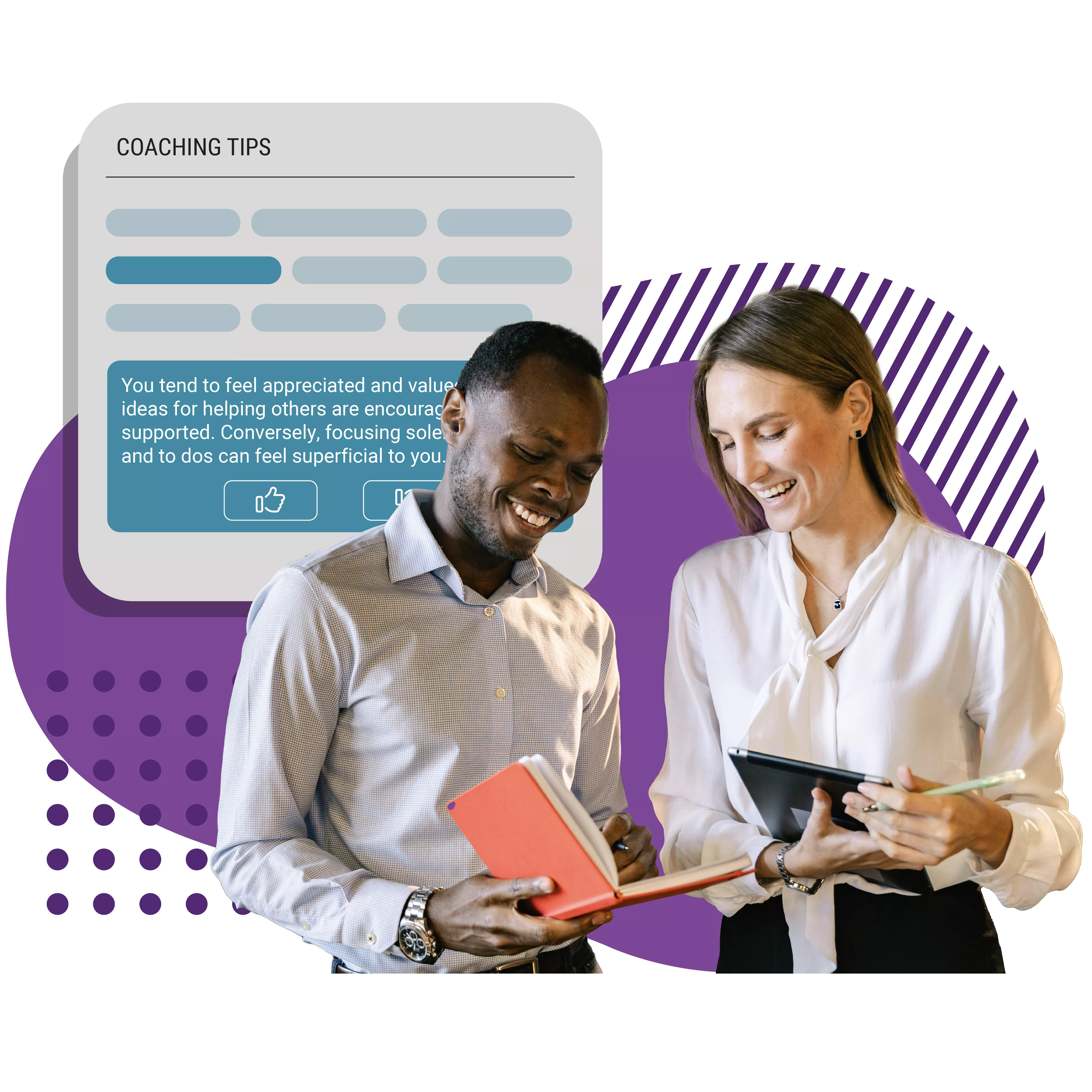
Transforming Leadership Coaching with Automated Coaching™
Leadership coaching can be more dynamic, responsive, and integrated into the daily life of organizations. By leveraging technology for personalization, accessibility, and scalability, Automated Coaching™ is poised to become the cornerstone of employee development strategies, ensuring that organizations remain agile and employees continuously grow.
Final Thoughts
It’s clear that this approach is more than just a management style—it’s a transformative style that can reshape the landscape of any organization. Here’s a summary of the key takeaways and some final thoughts on the enduring impact of coaching leadership.
Key Takeaways:
- Adaptability of Coaching Leadership: Coaching is not a static set of behaviors but a dynamic interplay of skills that adapt to the needs of individuals and the organization.
- Personal Growth and Team Development: At its core, coaching fosters personal growth, which catalyzes team development and organizational success.
- Cultural Shift: Implementing a coaching leadership style signifies a cultural shift towards a more collaborative, empathetic, and fulfilling workplace.
- Technological Integration: The future of coaching leadership is intertwined with technology, offering personalized, accessible, and scalable development opportunities through Automated Coaching™ for entire teams.
- Feedback-Rich Environment: A coaching culture thrives on communication skills, continuous feedback, shared learning, and a commitment to collective improvement.
Further Development and Resources:
For leaders looking to develop their coaching skills further, the following resources provide valuable insights and practical strategies for developing and cultivating a coaching culture within your organization:
These resources are designed to guide leaders through the nuances of coaching in the workplace, offering actionable advice on integrating coaching principles into their leadership approach and creating an environment where coaching is a natural part of the organizational fabric.
In conclusion, embracing coaching leadership is not just about adopting a new set of practices; it’s about nurturing a philosophy that values human potential and collective success. As organizations continue to evolve, the principles of coaching leadership will remain steadfast, guiding the way to a future where every leader is a coach and every interaction is an opportunity for growth and development.

